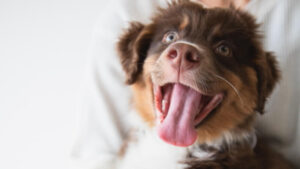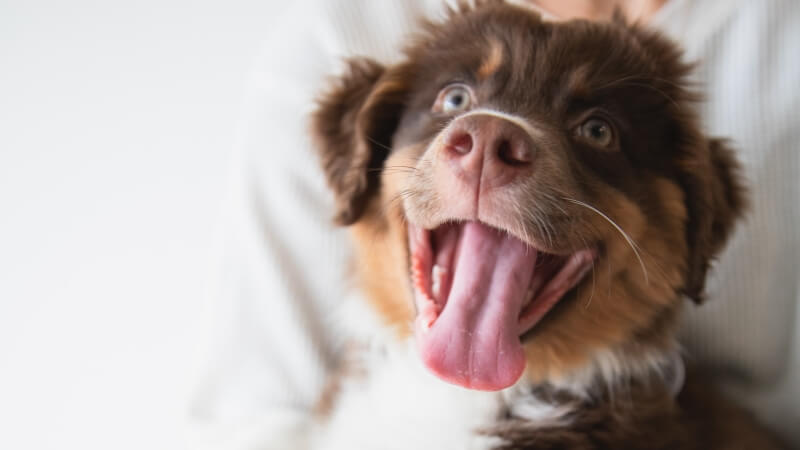
Dog Puzzle Feeder vs Interactive Toys: Which Is Best For Your Pooch?
Choosing the right plaything for your furry friend – be it a dog puzzle feeder or interactive toys – is essential for their mental and

Are you ready to transform your dog’s mealtime into a thrilling mental challenge? Crafting a DIY puzzle feeder is the way to go.
In this guide, we’ll provide you with a comprehensive materials checklist to ensure you have everything you need to create an engaging puzzle feeder for your pup.
Let’s dive into the list of materials required to make a puzzle feeder that’ll keep your dog entertained and mentally stimulated:
Cardboard or Hardboard
Pros:
Cons:
Scissors or Cutting Tools
Pros:
Cons:
Glue or Double-Sided Tape
Pros:
Cons:
Measuring Tools (Ruler)
Pros:
Cons:
Decorative Materials (Optional)
Pros:
Cons:
Pet Food or Treats
Pros:
Cons:
Now that we’ve examined the pros and cons of these materials, let’s move on to crafting your very own puzzle feeder.
Creating a puzzle feeder might seem like a daunting task, but we’ll guide you through it step by step. It’s a fun DIY project that’ll benefit your pup’s mental well-being.
Making the puzzle more challenging can be even more enjoyable for your dog. Here’s how:
Now that you know how to create a puzzle feeder let’s explore the numerous advantages of incorporating one into your dog’s daily routine.
As you embark on this DIY journey, it’s essential to be aware of common mistakes that can affect the effectiveness of your puzzle feeder.
Crafting a DIY puzzle feeder using the materials checklist provided is an excellent way to keep your dog mentally engaged during mealtime.
By investing time and creativity into this project, you’re enhancing your dog’s overall well-being while strengthening the bond between you and your furry companion.
So, embark on this fun journey today, and watch your dog enjoy the mental challenges of their new mealtime adventure.
Don’t hesitate to introduce a puzzle feeder into your dog’s routine—they’ll thank you for it! It’s a rewarding and engaging experience that benefits both you and your pet.
By making mealtime more exciting and mentally stimulating, you’re providing your dog with valuable enrichment that contributes to their happiness and well-rounded development. Happy crafting and puzzle-feeding!
FAQ 1: Can I Use Materials Other Than Cardboard?
Answer: While cardboard is a commonly used material for crafting puzzle feeders due to its availability and ease of use, you can explore other options. Materials like wood, plastic, or even fabric can be used, depending on your crafting skills and your dog’s preferences. Just ensure the chosen material is safe for your pet.
FAQ 2: How Do I Determine the Right Difficulty Level for My Dog?
Answer: Choosing the appropriate difficulty level for your dog’s puzzle feeder is important. Start with a simpler design and observe your dog’s progress. If they quickly solve it, consider adding complexity over time. The goal is to provide a challenge without causing frustration.
FAQ 3: Can Puzzle Feeders Replace Regular Dog Bowls?
Answer: Puzzle feeders are a great addition to your dog’s mealtime routine for mental stimulation. However, they should not entirely replace traditional feeding. It’s essential to balance puzzle feeders with regular bowls to ensure your dog receives consistent nutrition.
FAQ 4: How Often Should I Clean the Puzzle Feeder?
Answer: Regular cleaning is essential to keep the puzzle feeder hygienic and appealing to your dog. Depending on the frequency of use, aim to clean it at least once a week. Pay special attention to removing any food residue or trapped moisture.
FAQ 5: What If My Dog Loses Interest in the Puzzle Feeder?
Answer: Dogs may lose interest in their puzzle feeders if they become too familiar with the design. To rekindle their interest, rotate different puzzle feeders or modify the existing one by changing the placement of treats or adjusting the difficulty level. Variety can keep them engaged.


Choosing the right plaything for your furry friend – be it a dog puzzle feeder or interactive toys – is essential for their mental and

Wondering if a puzzle feeder could revolutionize your pet’s mealtime into an exciting challenge? This unique device promises to engage your furry friend both mentally

For passionate pet enthusiasts, a puzzle feeder is more than just a toy; it’s a critical tool for mental stimulation and dietary control for their

Are you ready to dive deeper into the world of puzzle feeder and embark on a journey to ensure your furry friends remain mentally stimulated?

Choosing the right plaything for your furry friend – be it a dog puzzle feeder or interactive toys – is essential for their mental and

Wondering if a puzzle feeder could revolutionize your pet’s mealtime into an exciting challenge? This unique device promises to engage your furry friend both mentally

For passionate pet enthusiasts, a puzzle feeder is more than just a toy; it’s a critical tool for mental stimulation and dietary control for their

Are you ready to dive deeper into the world of puzzle feeder and embark on a journey to ensure your furry friends remain mentally stimulated?
Copyright © 2024 puppypuzzlefeeder. All Rights Reserved.